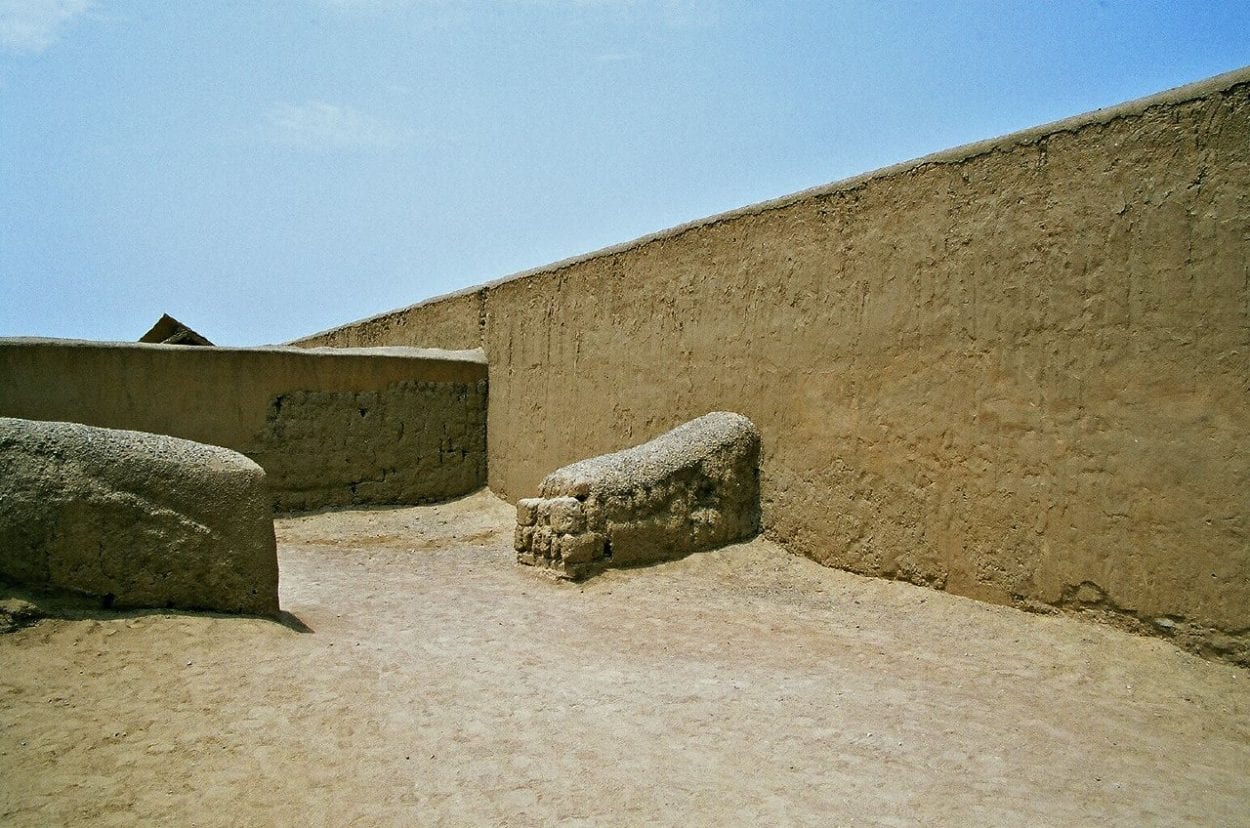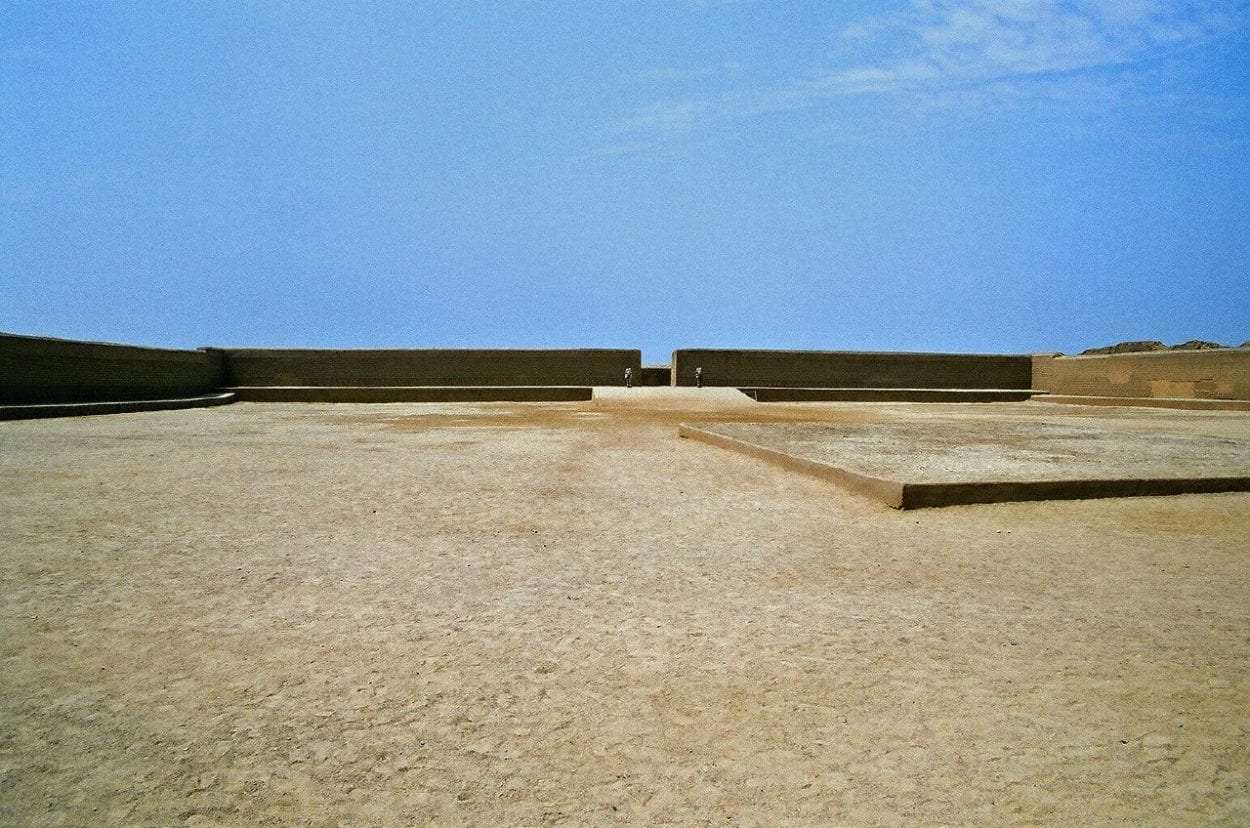Chan Chan is an archaeological site and ancient capital of the Chimú Kingdom, located at the mouth of the Moche valley in an arid section of the coastal desert of northern Peru.
The Chimú culture emerged around AD 850-900, having succeeded the Moche culture and controlled an area of 1,000 kilometres (620 mi) of coastline from Piura in the north to Paramonga in the south.
The Kingdom was centred on Chan Chan, a large adobe city that covered an area of 4942 acres, making the site one of the largest pre-Columbian cities in South America. The name is probably derived from the Quingnam “Jiang” or “Chang” which means Sun, from which Chan-Chan would be literally: Sun-Sun.
Chan Chan consisted of nine large rectangular complexes (‘citadels’ or ‘palaces’), containing pyramidal temples, reservoirs, cemeteries, plazas, burial platforms, storerooms and living quarters for the city elite and royalty.

Most of the lower class were artisans and farmers whose modest dwellings contained small, irregular agglutinated rooms situated around the citadels in defined industry and production sectors.
The earthen walls of the buildings were decorated with abstract motifs of anthropomorphical and zoomorphical subjects that demonstrate an architectural ensemble of symbolic and technical prowess in their construction.
Chan Chan reached its peak during the 15th century where it had an estimated population of around 40,000–60,000 inhabitants. Between AD 1465 and 1470 the Chimú came under Inca rule and many artisans were displaced leading to a decline in the city’s prosperity.

It was common practice for the Inca to use the mitma system of ethnic dispersion to quell any uprisings in new territories by forcing large numbers of ethnic populations to resettle in other locations of the Inca Empire.
By the time Spanish conquistador Francisco Pizarro arrived around 1532, Chan Chan was found largely abandoned and was looted by the Spanish for its many treasures and gold.
Header Image Credit : Bruno Girin – CC BY-SA 2.0





